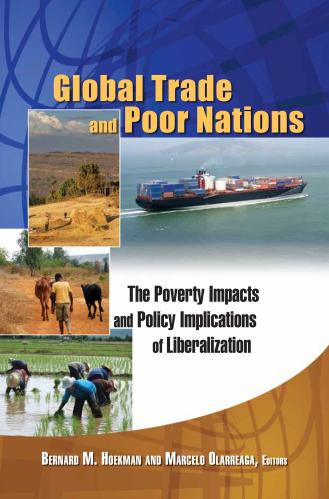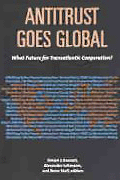Studies in this week’s Hutchins Roundup find that low term spreads don’t necessarily predict recessions, markups are higher today than in 1980, and more.
Want to receive the Hutchins Roundup as an email? Sign up here to get it in your inbox every Thursday.
Low term spreads don’t necessarily predict recessions
The financial press has raised concerns about the recent flattening of the yield curve, or a narrowing of the difference (or spread) between nominal yields on short and longer-term Treasuries, because recessions have often been preceded by periods with unusually low term spreads. Eric Engstrom and Steven Sharpe of the Federal Reserve Board show that this statistical relationship between long-term spreads and recessions falls away once they account for measures of the market’s expectation for monetary policy. In particular, they find that the “near-term forward spread”—the difference between the implied forward rate on a Treasury bill six quarters from now and the current yield on a 3-month Treasury bill—is a better predictor of recessions. A negative near-term forward spread suggests that investors expect the Federal Reserve to ease monetary policy over the subsequent quarters, and by extension, suggests that investors anticipate a substantial decline in economic activity. It is therefore not surprising that negative near-term forward spreads tend to precede recessions, as this simply indicates that investors expect a recession to occur, the authors argue. The near-term forward spread has remained stable and positive recently, suggesting a recession is unlikely, they say.
Markups are higher today than in 1980
Jan De Loecker of Princeton University and Jan Eeckhout of University College London use the financial statements of roughly 67,000 companies in 134 countries from 1980 to 2016 to calculate firm-level markups, the ratio of output prices to marginal costs. Aggregating firm-level markups into national, continental, and global measures of the average markup weighted by firms’ sales shares, they find that the average global markup has risen from 1.1 in 1980 to 1.6 in 2016. Markups rose by more in advanced economies in Europe and North America than in emerging markets in Asia and South America. The rise in the global average markup suggests that markets are becoming more concentrated, with significant distributional consequences. As markups rise, owners benefit more than workers and higher prices leave consumers worse off, the authors argue.
Negative nominal interest rates do not reduce bank profitability
In response to the 2008 recession and slow recovery, several central banks set negative nominal interest rates, which some feared might adversely affect bank profitability. Using annual income statements for 5,113 banks in 27 countries between 2010 and 2016, Jose Lopez and Mark Spiegel of the Federal Reserve Bank of San Francisco and Andrew Rose of the University of California, Berkeley, show that negative nominal interest rates only had a small impact on bank profitability. Banks, particularly small and low-deposit banks, lost net interest income because they were hesitant to pass on negative interest rates to depositors; but they offset lower net interest income by increasing fees and capital gains.
Chart of the week: Short-term inflation expectations are rising

Quote of the week:
“[I]n advanced economies globalization has become associated with rising inequality and heightened uncertainty, with many people lamenting a loss of control and losing trust in the system. Part of the problem has been that economists and policymakers have not been sufficiently upfront about the distributional consequences of rapid changes in technology and globalization. Amongst economists, a belief in free trade is totemic. But, while trade makes countries better off, it does not raise all boats…. Rather, the benefits from trade are spread unequally across individuals, regions and time. As result, for many citizens of advanced economies, measures of the aggregate gains from globalization bear little relation to their own experience. Partly as a result, protectionist sentiment has been rising, prompting the question what could a period of deglobalization mean for the economic outlook?” says Mark Carney, governor of the Bank of England.
“If implemented, the tariffs announced thus far … will broadly double average bilateral tariff rates, and could raise average U.S. tariffs to rates not seen in over 50 years. There are some, tentative signs that this more hostile and uncertain trading environment may be dampening activity. For example, survey measures of global export orders and manufacturing output have fallen back from highs at the start of this year, and growth in U.S. and euro-area capital goods orders fell to zero in Q1. …[T]here is a growing possibility that trade uncertainty could crystallize the longstanding risks of a snap back in long-term interest rates, increased risk aversion and a general tightening in global financial conditions. Bank of England simulations suggest that … a larger increase in tariffs of 10 percentage points between the U.S. and all of its trading partners could take 2.5 percent off U.S. output and 1 percent off global output through trade channels alone.”
The Brookings Institution is committed to quality, independence, and impact.
We are supported by a diverse array of funders. In line with our values and policies, each Brookings publication represents the sole views of its author(s).










Commentary
Hutchins Roundup: Low term spreads, rising markups, and more
July 6, 2018